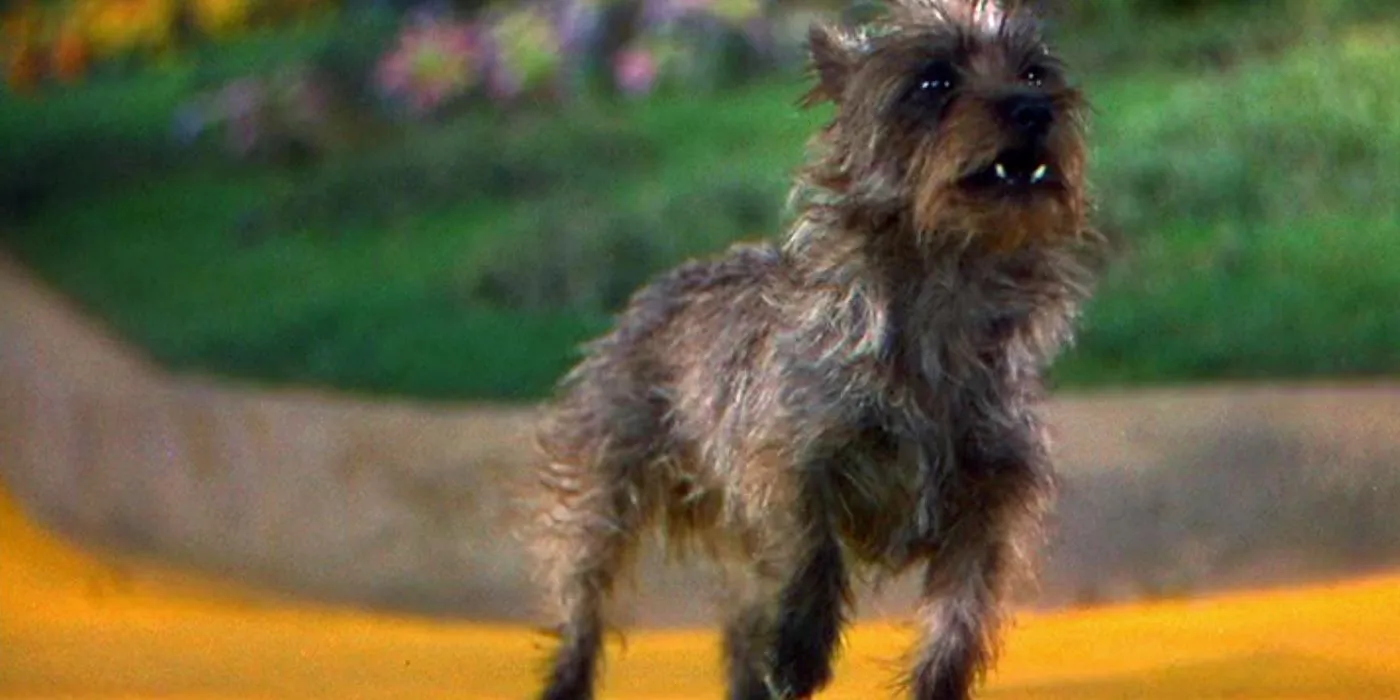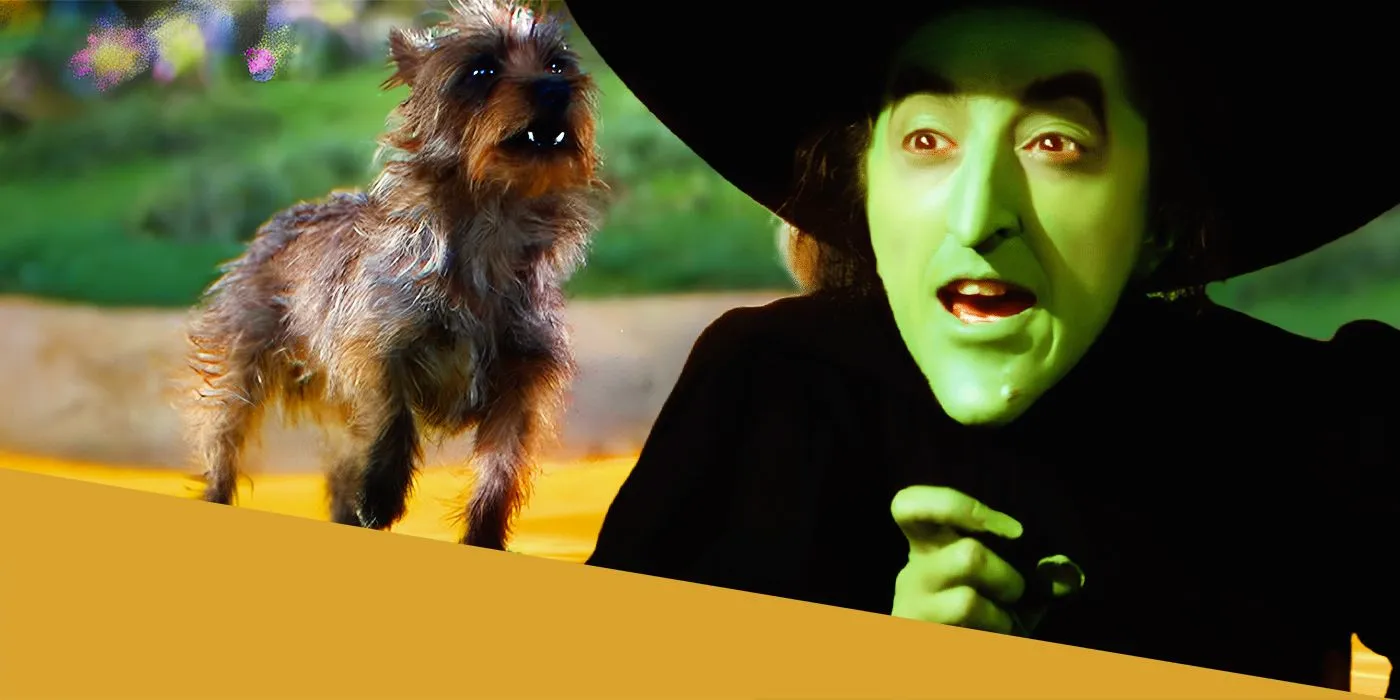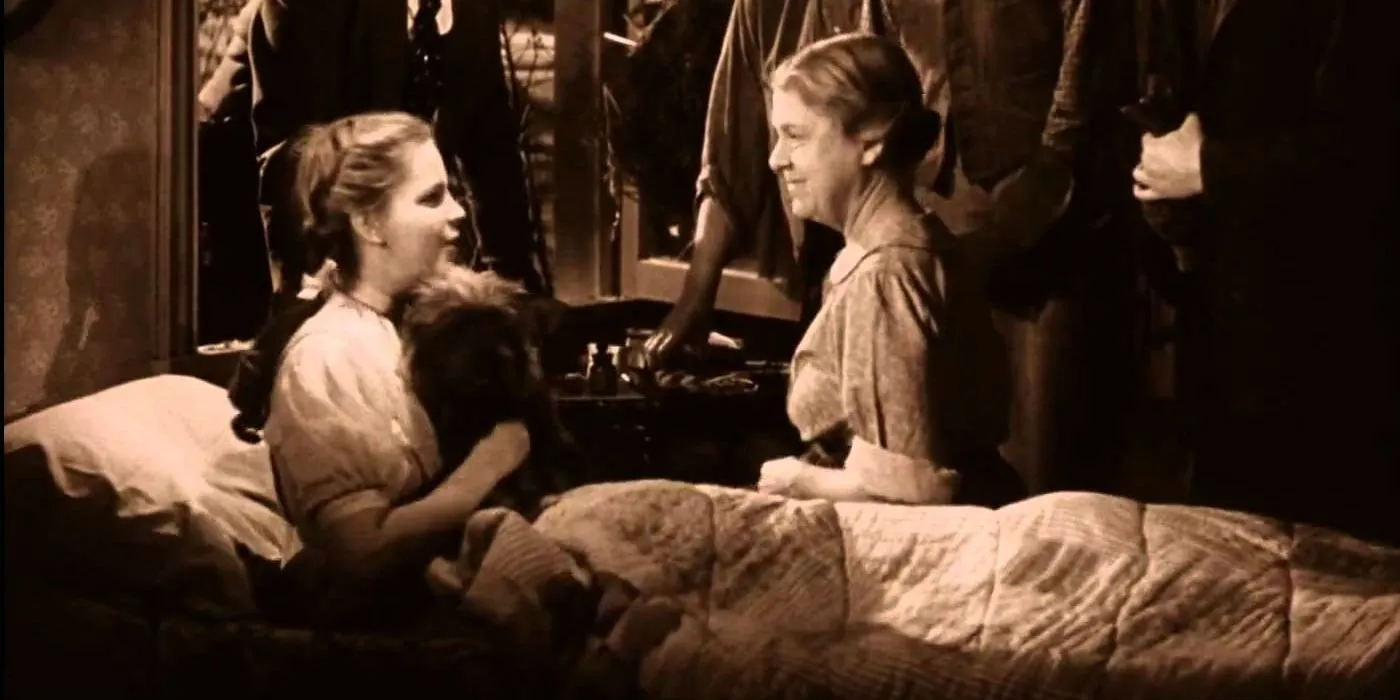In the glittering landscape of Old Hollywood, stories of wage disparity are not uncommon, but few are as captivating as the tale of Terry, the Cairn Terrier who played Toto, the dog in The Wizard of Oz. This timeless 1939 masterpiece, celebrated for its vibrant Technicolor and beloved characters, featured Judy Garland as Dorothy Gale and her loyal canine companion, Toto, on a whimsical journey home. Amidst the film’s many behind-the-scenes controversies, from dangerous makeup to workplace harassment, one particular detail highlights a fascinating wage gap: Terry the dog reportedly earned more per week than some of her human co-stars. This revelation not only underscores Toto’s integral role in the film’s enduring appeal but also sheds light on the surprising value placed on animal actors in Hollywood’s Golden Age. For those interested in the broader impact of canine performers in cinema, exploring the world of dog movies real life reveals just how deeply these furry stars have touched audiences.
Toto’s Notable Earnings for “The Wizard of Oz”
Terry, the talented Cairn Terrier, was a pivotal part of The Wizard of Oz production, working alongside her dedicated trainer, Carl Spitz. Her weekly salary for embodying the role of Toto was an impressive $125. Adjusting for inflation, this equates to approximately $2,729.38 in today’s currency, a substantial sum for a performer of any species. While Terry’s human counterparts might have questioned the fairness, her earnings naturally went to Spitz, her trainer, who was responsible for her care and performance. Her significant pay reflected not only her central role in the narrative but also her capability in performing her own stunts, adding a layer of authenticity to Dorothy’s adventurous quest.
Terry’s commitment to her craft was evident even through adversity; she sustained a broken foot during filming when a Winkle guard accidentally stepped on her. Despite the injury, her dedication highlighted the professionalism expected of animal actors. Prior to her iconic role in The Wizard of Oz, Terry was already an experienced film star, having appeared in seven other movies, including a memorable turn alongside Shirley Temple in Bright Eyes. The meticulous casting requirement for a canine that perfectly matched L. Frank Baum’s original book description for Toto further justified her generous compensation, establishing her as an invaluable asset to the production.
 Toto standing on the Yellow Brick Road in The Wizard of Oz
Toto standing on the Yellow Brick Road in The Wizard of Oz
Comparing Toto’s Salary to Human Co-Stars
While Toto’s weekly income was substantial, it didn’t surpass that of the film’s leading lady, Judy Garland, who earned $500 per week as Dorothy Gale, translating to nearly $11,000 today. Other principal actors also commanded higher salaries: Ray Bolger (Scarecrow) and Jack Haley (Tin Man) each earned $3,000 weekly, while Bert Lahr (Cowardly Lion) received $2,500. Margaret Hamilton, who chillingly portrayed the Wicked Witch of the West, made $1,000 per week. However, the true disparity emerges when comparing Toto’s wages to those of the beloved Munchkin performers.
Out-Earning the Munchkins
Astonishingly, most of the Munchkin performers received only about $50 per week, significantly less than Toto’s earnings. Even those with speaking roles among the Munchkins typically earned around $75, with only a select few directly hired by MGM reaching $100. It’s hard to believe that these actors, who brought the vibrant Munchkinland to life with their singing, dancing, and multiple roles, were compensated so meagerly compared to the four-legged star. Subsequent information revealed that a single agent represented many Munchkin performers, possibly skimming from their salaries, compounding their financial struggles. Despite the wage imbalance, the collective efforts of the 124 Munchkin performers earned them a star on the Hollywood Walk of Fame, cementing their legacy in The Wizard of Oz‘s timeless appeal.
 Margaret Hamilton as the Wicked Witch and Toto in the Wizard of Oz
Margaret Hamilton as the Wicked Witch and Toto in the Wizard of Oz
Other Animal Actors Who Earned More Than Humans
Toto’s story is not an isolated incident in Hollywood history; numerous instances exist where animal actors have commanded higher salaries than their human co-stars, often becoming major box office draws themselves.
The Golden Age of Animal Stars
One of the most famous examples is Rin Tin Tin, the legendary German Shepherd who became a silent film sensation. Journalist Susan Orlean, author of a biography on the canine star, reported in The New Yorker that Rin Tin Tin was paid an astounding $2,000 per week for his work in silent films. This figure could be up to eight times more than what his human counterparts earned, largely because the dog was the primary audience attraction. Rescued from a World War I battlefield, Rin Tin Tin became a cinematic legend, even credited with saving Warner Bros. from bankruptcy. In the 1924 film The Lighthouse By The Sea, Rin Tin Tin’s salary, in addition to his trainer’s, was $1,000 a week, while his human co-star, William Collier Jr., earned a mere $150. Such wage differences were common throughout the 1920s, although comprehensive records of actor salaries from that era are often scarce. These captivating tales are part of the greatest dog stories ever told.
 Dorothy and her friends head up the Yellow Brick Road in The Wizard of Oz
Dorothy and her friends head up the Yellow Brick Road in The Wizard of Oz
Modern Day Animal Actor Success Stories
Another rumored case involves Pal, the original Lassie, who starred in the 1943 film Lassie Come Home. Whispers suggest Pal earned more than a young Elizabeth Taylor, who was just beginning her career as a child actor before she became one of old Hollywood’s biggest stars. While Pal’s exact salary remains unconfirmed, it was not unusual for animal actors to out-earn young or less established human co-stars, especially if their agents were more adept at negotiating. The legacy of such animal stars continues to inspire filmmakers, leading to more real life dog movie adaptations.
Even in modern cinema, while less common, animal actors can still achieve significant financial success. Crystal the capuchin monkey, a highly sought-after animal actor, launched her career in 1997’s George of the Jungle and has since appeared in major franchises like Night at the Museum and The Hangover. She also co-starred in the sitcom Animal Practice. The Hollywood Reporter revealed that Crystal earned $12,000 per episode for her role on the show, a sum that exceeded the salaries of her human co-stars. This demonstrates that the phenomenon of animal actors making substantially more than their human counterparts, much like Toto in The Wizard of Oz, remains a fascinating, albeit rarer, possibility in contemporary Hollywood.
 Dorothy, Toto, and Auntie Em in The Wizard of Oz ending
Dorothy, Toto, and Auntie Em in The Wizard of Oz ending
Conclusion
The story of Toto, the dog in The Wizard of Oz, and his surprisingly high salary offers a unique glimpse into the economics and values of early Hollywood. Terry, the Cairn Terrier behind the iconic character, was more than just a pet on set; she was a professional performer whose skills, dedication, and undeniable appeal commanded a significant wage, even surpassing some human actors. Her legacy, alongside other renowned animal stars like Rin Tin Tin and Lassie, highlights the enduring impact and commercial value that well-trained animal performers bring to the silver screen. These animals, through their talent and charisma, have not only captured the hearts of audiences worldwide but have also occasionally rewritten the script on Hollywood’s pay scales. Understanding these fascinating dynamics provides a richer appreciation for the magic of cinema and the unforgettable contributions of its furry stars.
References
- LA Times
- The New Yorker
- The Hollywood Reporter
